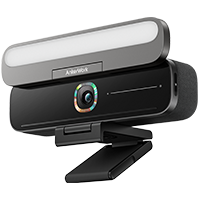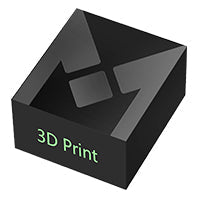Are you thinking of escaping the hustle and bustle of city life and retreating to a quiet cabin nestled in nature? Whether you're looking for a permanent lifestyle change or just a peaceful weekend getaway, building and living in an off grid cabin offers an incredible opportunity to reconnect with the environment while becoming self-sufficient.
But how do you go about it? And more importantly, how do you ensure that this dream is sustainable in the long run? Read on as we walk you through everything you need to build, power, and thrive in your own off-grid retreat!
What Is an Off-Grid Cabin?
An off-grid cabin is a type of home or getaway built to operate independently from traditional utilities like electricity, water, and sewage systems. In other words, it's a cabin designed for self-sufficiency. Instead of relying on city power, you'll use renewable energy sources like solar panels or wind turbines. For water, you might collect rainwater, use a nearby well, or have a natural water source.
Living in an off-grid cabin doesn't mean you have to give up modern comforts completely—it just means finding alternative ways to meet your needs without being hooked into the grid. Whether you're looking for a quiet place to escape for the weekend or you're ready to fully commit to an off-grid lifestyle, an off-grid cabin offers a way to reconnect with nature and live more sustainably. 
Benefits of Living Off the Grid
Living off the grid comes with a wide range of benefits that appeal to anyone looking for more independence and a deeper connection to nature.
One of the biggest perks is self-sufficiency. By generating your own power, collecting your own water, and managing your resources, you’re no longer reliant on public utilities or affected by utility price hikes or outages. This not only saves money in the long run but also gives you more control over your lifestyle.
Another major benefit is environmental impact. Off-grid living encourages sustainable practices, such as using renewable energy like solar or wind power, reducing waste, and conserving resources. This eco-friendly approach can significantly reduce your carbon footprint and help preserve natural ecosystems.
On top of that, living off the grid offers a simpler, more peaceful lifestyle. Away from the distractions of modern life, you can enjoy the beauty of nature, have more privacy, and experience a sense of freedom that's hard to find in densely populated areas. Whether you're seeking a full-time lifestyle change or just a quiet retreat, the benefits of off-grid living can enhance your well-being in countless ways.
How to Build an Off Grid Cabin?
As we've seen, living in an off-grid cabin is a rewarding experience that allows you to create a personal haven away from the hustle and bustle of modern life while being self-sufficient. So, how exactly can you build one? Here's a step-by-step guide to help you get started:
Choose the Right Location and Land
The first and most crucial step is finding the perfect spot for your off-grid cabin. Look for land that has access to natural resources, like a water source and enough sunlight for solar power. Additionally, check local regulations and zoning laws to ensure that you can legally live off the grid in your chosen area.
Design Your Cabin
Once you have your location, it's time to design your cabin. Decide how big you want your cabin to be and sketch out a floor plan. Think about the number of rooms, storage space, and how you'll use each area.
Choose sustainable and durable building materials. Wood is a popular choice, but you might also consider recycled materials or even building a tiny home. Incorporate design elements that promote energy efficiency, like proper insulation and strategically placed windows for natural light.
Build the Structure
According to your cabin's design and the land, lay a solid foundation and erect the walls and roof framework. Install a durable roof to protect against the elements. Metal roofing is long-lasting and good for collecting rainwater. Then, apply siding and exterior finishes that can withstand local weather conditions.
Source Your Water
An off-grid cabin will need a reliable water source. You can collect rainwater, drill a well, or use a nearby stream or lake (where legally permitted). Make sure to include a water filtration system to ensure your water is safe to drink.
Install Waste Systems
Managing waste is essential for off-grid living. Composting toilets are a popular option for cabins, as they turn human waste into compost that can be safely disposed of. You'll also need a greywater system to handle water from sinks and showers in an environmentally friendly way.
Prepare for Heating and Cooling
Depending on your climate, heating and cooling are important factors. Many off-grid cabins use wood-burning stoves for heat, as wood is a renewable resource. You can also design your cabin to take advantage of natural ventilation and passive solar heating to regulate the temperature. 
How Do You Power Off Grid Cabin?
Now that you have the structure built and basic water and waste systems in place, let's talk about power.
Powering your off-grid cabin sustainably requires thoughtful consideration of renewable energy solutions. The most popular method is solar power, but wind and hydropower can also be options depending on your location.
Solar Power
Solar energy is by far the most accessible and reliable power source for off-grid cabins. By installing a solar panel system, you can harness sunlight to generate electricity for your cabin. You'll also need a power storage system, like a battery bank, to store excess energy for nighttime or cloudy days.
If your cabin is mostly for weekend getaways, you might not need to invest in a full off-grid solar setup. That's where portable solar generators come in handy. These compact off grid cabin kits combine a power station with portable solar panels, making them a simple and reliable solution. They're easy to set up, budget-friendly, and provide enough power to cover your needs without the expense or hassle of a larger system.
Here are some of the best solar kits for off grid cabin you should consider:
The Anker SOLIX C1000 Solar Generator + 200W Solar Panel kit offers 1800W of power output and 11 ports, so you can power multiple appliances at once. With SurgePad Technology, it handles up to 2400W surge output, meaning it can run 99% of your essential devices. It has a 1056Wh capacity, enough to run a mini fridge for 33 hours, and can be monitored via an app using Bluetooth or Wi-Fi.
Its durable LiFePO4 batteries offer up to 3,000 cycles and come with a 5-year warranty. The system recharges quickly when paired with the 200W solar panel, which features an adjustable kickstand for optimal sunlight and IP67 waterproofing for durability in tough weather.
For those looking for a slightly smaller option, the Anker SOLIX C800 Plus Solar Generator + 200W Solar Panel kit offers excellent power in a more compact package. With a 768Wh capacity and 1200W output, it's more than capable of running multiple appliances at your off-grid cabin. Thanks to SurgePad Technology, this generator can handle appliances that require up to 1600W, and you can plug in up to 10 devices at once.
Like the C1000, the SOLIX C800 Plus comes with durable LiFePO4 batteries, offering 3,000 cycles and backed by a 5-year warranty. Even more impressively, these batteries are rated to last for up to 10 years, ensuring long-term use without worries about frequent replacements. The included 200W solar panel boasts high efficiency up to 23%, so you can capture as much sunlight as possible.
Wind Power
If your cabin is located in an area with consistent wind, you can consider installing a small wind turbine. Wind energy can complement solar power, especially in locations where sunlight is limited during winter months.
Micro-Hydro Power
For cabins near flowing water, micro-hydro generators can provide a continuous and steady power source. However, these systems tend to be more complex and expensive to install.
What Are the Must-Haves for Living Off the Grid?
Beyond these off-grid utilities like power and water, there are other life essentials that are just as crucial for a comfortable and sustainable lifestyle. Here are some must-haves to help you thrive:
- Food Storage and Preservation:Off-grid living often means you won't have easy access to grocery stores, so food storage and preservation are essential. Invest in methods like canning, dehydrating, or fermenting to store your harvests for the long term.
- Lighting and Essential Gear:When the sun goes down, having reliable off-grid lighting is important. Solar-powered lanterns, LED lights, and even candles can provide the light you need. Keep a headlamp or flashlight handy for nighttime activities.
- Communication and Navigation:Even though you may be living remotely, it's important to have a way to communicate with the outside world in case of emergencies. A satellite phone, CB radio, or even a solar-powered communication device can keep you connected. A good compass, maps, and a GPS device can help with navigation when exploring your surroundings.
- Self-Sufficiency Skills:Skills like gardening, foraging, hunting, and fishing can go a long way in ensuring you have a steady supply of food. Knowing how to grow your own vegetables, raise chickens for eggs, or even identify wild edibles can provide essential sustenance. You'll also need basic DIY and repair skills to maintain your cabin and handle everyday issues without external help.
- Health and First Aid Supplies:Medical emergencies can be harder to handle when you're living off the grid, so having a fully stocked first aid kit is vital. It should include bandages, antiseptics, pain relievers, and any personal medications. It's also a good idea to have basic knowledge of first aid and survival medicine.
Conclusion
Living in an off grid cabin provides a unique opportunity to embrace sustainability, independence, and a deeper connection with nature. From the initial steps of building your cabin to finding efficient ways to power and sustain it, going off the grid allows for a return to simpler, more intentional living. Plus, with advancements in solar technology, like the Anker solar generator kits we've explored, powering your off-grid cabin with green energy is easier and more accessible than ever. With careful planning and the right tools, you'll enjoy the freedom and self-reliance that off-grid living provides.
FAQs
How much would it cost to build an off-grid cabin?
The cost of building an off-grid cabin can vary depending on the size, location, materials, and off-grid systems like solar power, water collection, and waste management. On average, a basic off-grid cabin can cost between $20,000 to $50,000. However, more advanced setups with high-end materials or complex energy systems can cost upwards of $100,000 or more.
What is the difference between homesteading and off grid living?
While both lifestyles emphasize self-sufficiency, homesteading often focuses on farming and food production, whereas off-grid living primarily involves generating your own utilities and reducing reliance on external resources.
Do people who live off-grid pay taxes?
Yes, off-grid residents are still required to pay property taxes, and depending on local laws, they may also need to pay income taxes. The independence of off-grid living does not exempt you from taxation.




















